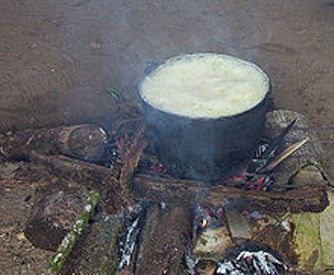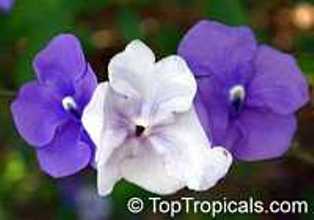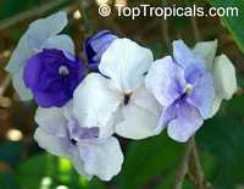Facts
In the Amazon region, B. grandiflora is an
ingredient for the “ayahuasca.” This is a hallucinogenic drink that shamans of
Amazonian tribes consume. According to Bradely C. Bennett, from the
Institute of Economic Botany, the Shuar tribe makes the
hallucinogenic drink by boiling the stems and leaves. After drinking the
“tea,” the shaman receives “strong feelings” and can then diagnose whatever
it is that is ailing his “pati ent.”
ent.”
The Quichua also use the plant as a hallucinogen. Their name for the plant is Chiricaspi, as was listed on the home page. The
word “chiri” means fever and “caspi” means tree. The plant got this name,
Fever Tree, by the effects experienced by the drinker. After
consuming the tonic, common symptoms were nausea and a fever or chills.
Also, this plant is used in curing fevers, which is another reason that
Fever Tree seems a fitting title.
FEVER TREES
Some fever trees produce a toxin called quinine, such as Cinchona pubescens. Interestingly, these plants are not the only thing to produce said toxin. According to Dr. William C. Agosta, a professor at Rockefeller University, the bombardier beetle actually shoots out quinine, produced within its own body, when it is attacked (1995).
Though it seems that fever trees are toxic and
 harmful,
they play a hand in saving lives.
harmful,
they play a hand in saving lives.
Dr. P. Egwaikhide, from the Department of Chemistry at the University of Benin, performed an experiment that had results showing that E. globules could be used to manage infectious diseases (2010).
The toxins form these trees can be used to cure
ailments and because of this fact, they are quite valuable. They are so
sought after that Mark Honigsbaum followed after Richard Spruce in searching
for the quinine bearing trees. Quinine can be used to cure malaria and as Honigsbaum wrote, he journeyed to Ecuador and risked being arrested in order
to bring his prized cure for malaria back (2001).
so
sought after that Mark Honigsbaum followed after Richard Spruce in searching
for the quinine bearing trees. Quinine can be used to cure malaria and as Honigsbaum wrote, he journeyed to Ecuador and risked being arrested in order
to bring his prized cure for malaria back (2001).
To drink in more knowledge, visit Adaptation.